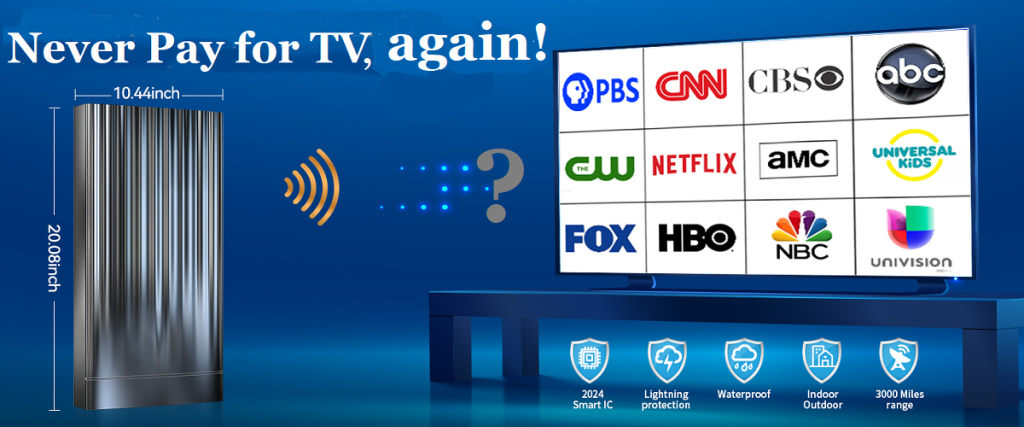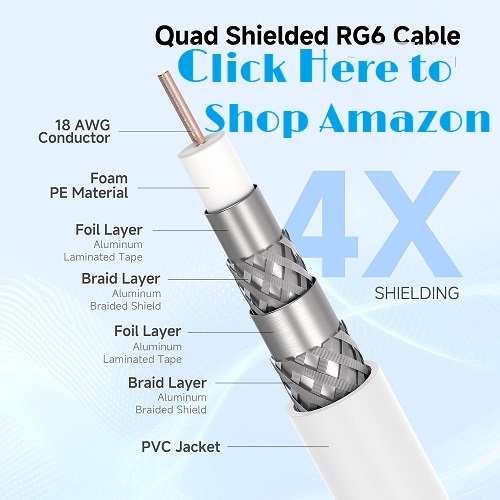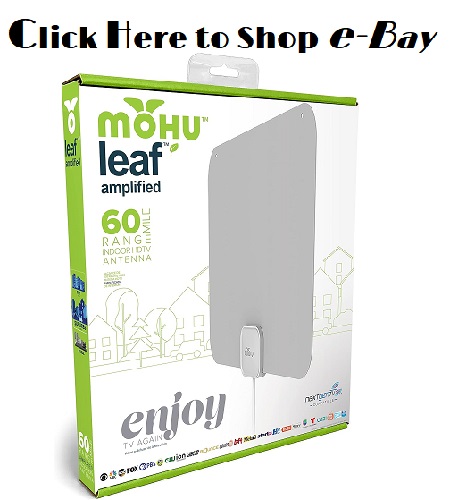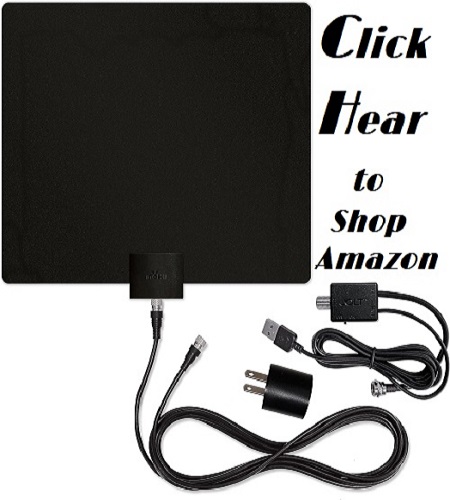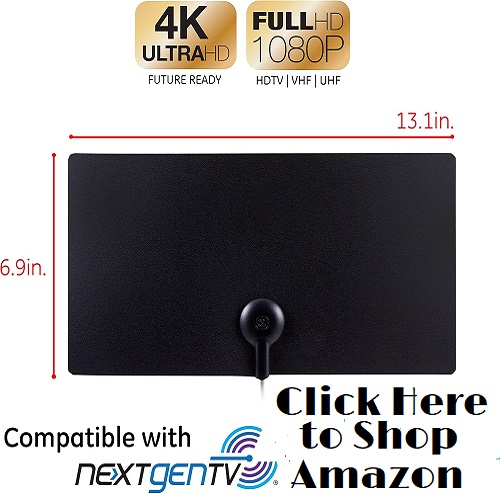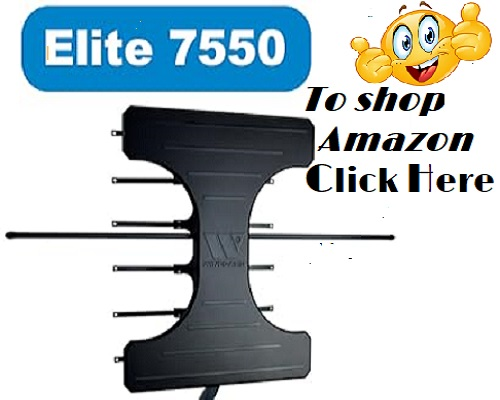Over-the-air Antennas — What You Need to Know
Mid-December 2024
Okay, so here’s how I discovered this “impressive” indoor / outdoor Over-the-air (OTA for short) TV antenna advertised above. Someone once told me the straight-line distance from coast to coast in the U.S. was about 2800 miles. Sooo, I imagined with a silly grin that with a long-range antenna, I should be able to capture every TV signal in the United States. During a moment of accidental brilliance, I ‘Googled’ the following: “3000-mile range Over-the-air TV antenna” and to my surprise, the above image is only a small part of the feedback! Hell, one website was promoting a 6,000-mile indoor Antenna for just beyond $15.00. That’s when I strongly suspected I had mistakenly entered the “Fantasy Land of OTA Antennas” 🙂
It just happens that during my youth, I learned a little something about capturing “analog” TV signals of the era as I spent weeks helping “string” track-wire up and down the mountains of Southeast KY in preparation of that goal. Back then, maximum success was capturing a strong enough signal from the three existing commercial networks (ABC, CBS or NBC) sufficient to actually watch all of three TV Channels.
On-the-other-hand, it was an Amazon.com website with a rating of 4.8 stars out of five; Customer Reviews totaled 119 and site data note that 400 were sold last month! I was hoping this was a twist to the old Paradox: “You have to spend money to make money” - the revised version: “You have to spend money to save money”.
But then as implied a paragraph earlier, I was aware of the many, many disabling factors the somewhat “weaker” Digital TV Signal faced in route to your home which all U.S. Broadcasters have been using, as I recall, since early June or July of 2009.
Sorry, further on-line research shows that OTA TV Antenna Gadgets like WaveMax, ReWave, Fusion4Home, and others who place such ads have received terrible Reviews overall. Yep, most are negative, most complain about poor reception quality, inconsistent channel pickup, and claims of exaggerated range capabilities.
In fact, users often report that the antennas struggle to receive even local channels which is especially troubling when compared to the advertised coverage area—most often described as a far bit more than 100 air miles.
Many customers consider such devices to be low-quality products. And yes, such conclusions are based upon actual user experiences!
Perhaps at least part of the problem with the previously described Over-the-Air Antennae include the attempt to capture ‘far away signals. Such is not suggested with two Over-the-Air Antennas that have received positive reviews! However, the targeted signal capture range is considerably less. Thereby eliminating many TV watchers as potential customers! In-other-words, “local” TV channels only—is what to expect and yes, they are free aside from the purchase price of the device.
In any event, before giving up on any of the Free TV antennas, first replace the provided coax cable with a RG59 coaxial cable with RG6 Such coax cables can be found by clicking the Image-Link on the left.
As I recall, the Image-Link leads to a webpage with two 15-foot lengths of well shielded cable, totaling 30 feet, you may need twice that length and several coax couplers. You can find straight couplers near the bottom of the aforementioned webpage for around a Dollar each or in about any hardware store and likely for less.
Then, be prepared to “find” the best indoor wall or window (via trial & error) within your home that is receiving the strongest signal (within 50 to 60 feet of your TV for best results).
Oh, before starting, keep in mind that walls made of concrete and rebar, mesh backed stucco walls, homes / walls circled by mountains, walls faced by nearby trees and to a lesser degree, a house with aluminum siding can block or interrupt over-the-air TV signals. On-the-other-hand, if the materials between your antenna and the incoming over-the-air TV signal transmitters consist only of wood, vinyl siding and common roofing materials, you should have no issue with getting strong signals with a Mohu Leaf 50 indoor antenna up to 60 air miles or a GE Ultra Edge indoor antenna up to 50 air miles from the signal source.
Below, Image-Links to each is Showcased for your convenience or if you prefer, they will be available in Today’s Catalog’s Gadget Department.
Mohu Leaf 50 | Best for suburbs
Price: $40.49 (as of 12-19-2024) Includes shipping & a 9% sales tax
Range: 60 miles 4K-ready (Ultra HD TV)
Available at an e-Bay Store Front
Mohu Leaf 50 | Best for suburbs
Price: $59.99 + Sales tax (as of 12-19-2024) amazon Link:
Range: 60 ‘Air’ miles 4K-ready (Ultra HD TV)
Available at an Amazon Store Front
_______________________________________________________________
GE Ultra Edge | Best for cities |
Price: $23.22 + Sales Tax (as of 12-19-2024)
Range: 50 miles 4K-ready (Ultra HD TV)
Available at an Amazon Store Front
Antennas like the Mohu Leaf 50 and GE Ultra Edge are capable of receiving the same channels that come in a TV provider’s basic cable TV package—but both are absent of DVR capabilities. Sooo, pause / rewind / and fast-forward to skip commercials are gone when OTA TV is the signal source 🙂
One last thing, if you happen to be a CNN, HBO or ESPN addict, you will not receive pay—TV stations via a TV antenna, ever. We’ve all seen OTA antenna promotions claiming this as a possibility, but it is 100% false. You will not receive ESPN, CNN, HBO or any other such channel with an OTA TV antenna!
______________________________________________________________
Additional, though Random Info Regarding OTA-TV
If you’re only a few miles beyond the range specified by the OTA TV Signal captured by the GE Ultra Edge or the Mohu Leaf 50 Antennas, there is an option you might consider:
The Winegard Elite 7550 — currently, it may be the best outdoor TV antenna in today’s marketplace. It has a 70-mile range and was Priced at $95.00 on Amazon as of 12-17-2024 (ships free but you’ll have to pay those Sales Taxes).
While there’s no evidence of broadcasters deliberately weakening their signals to keep viewers tied to pay TV environments, but they have little motivation to invest in improving OTA reception. The focus instead has shifted to streaming platforms and partnerships with paid TV providers.
The simple truth is, many younger TV viewers are unaware that free broadcast television programming is even available, or ever was, via an antenna 🙂 For decades, the dominant narrative has centered around the growth of cable, satellite, and more recently, streaming platforms — creating an assumption that “TV” must be paid for through a subscription. This, in an age of on-demand content and unlimited choice — fueled further by the presence of broadband internet and mobile connectivity — many young consumers simply have no context of what broadcast TV even is.
Sooo, still wondering if digital over-the-air signals today are as strong as the analog over-the-air signals of the 1960s were? NO, Though digital over-the-air signals today generally provide better picture quality than analog signals of the 1960s, they may not be as consistently strong across a long distance due to the nature of digital signals which either “fully receive or completely drop out”, unlike analog signals that gradually degrade with distance or interference; this means that in some fringe areas, like the mountains of Southeast Kentucky, reception is likely to be weaker with digital than the old analog signals. Though, Digital TV is far superior in quality and clarity than analog TV, the fact remains that a weak signal can cause problems with reception.
This may explain why the Urban Legend persists that US TV Stations have reduced their signal strength in support of Cable and Satellite TV.
In final analysis, if you live in a mountainous region and still want free TV. Ya might want to follow-up on the recent rummer that the internet has legally been breached → can you spell → → → Streaming TV Free!
Finish
Can You Imagine That
____________________________________________________________________________
